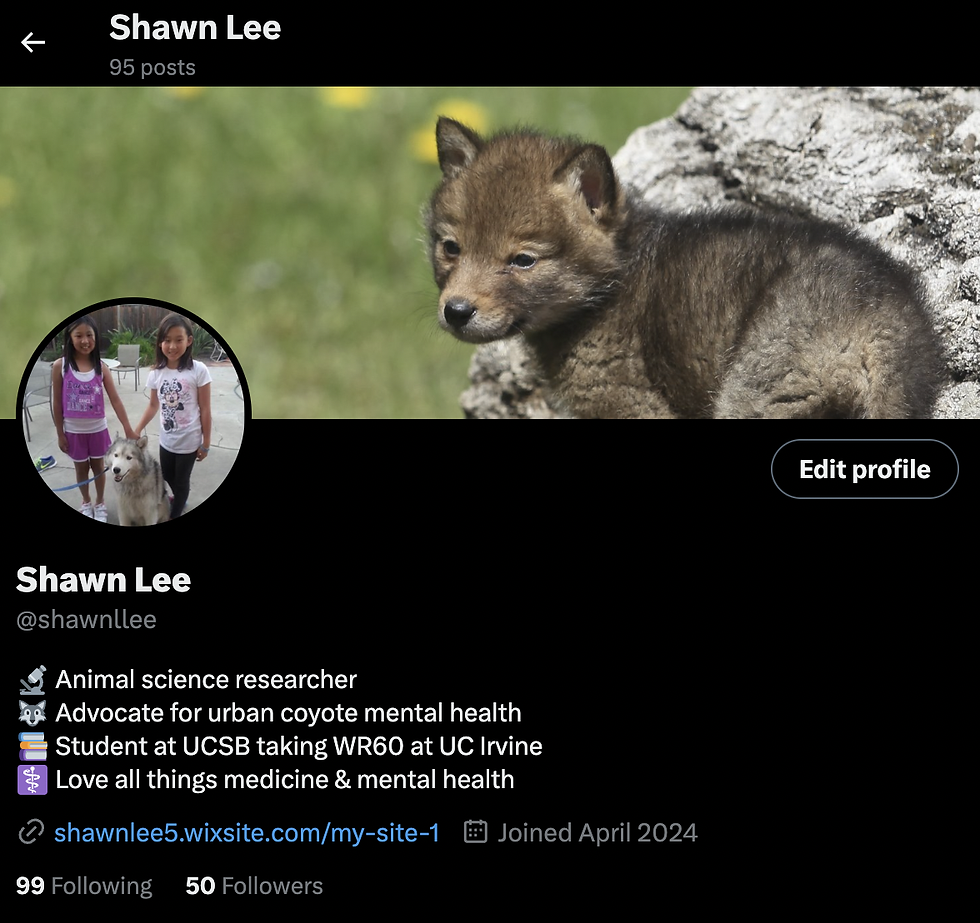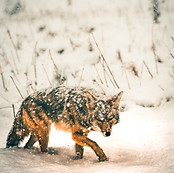Blog 11: 5/28/24
- Shawn Lee
- May 28, 2024
- 2 min read
Hi everyone! It's almost the end of my journey in animal research, it's bittersweet. I got the opportunity to share some solutions and counterarguments to my research on Twitter. Here is my reflection;
The Solutions I Found
After brainstorming and researching sources like YouTube and academic articles, I identified three key solutions: budgeting for wildlife crossings, educating communities on human-coyote interactions, and cleaning up litter.
Budgeting for Wildlife Crossings
Wildlife crossings—overpasses, underpasses, or tunnels—allow animals to safely navigate human-made barriers like roads. These structures reduce stress and anxiety for coyotes by connecting fragmented habitats. Although costly, investing in these crossings prevents road fatalities and promotes a safer, more connected environment for urban wildlife.
Educating Communities on Human-Coyote Interactions
Education fosters better coexistence between humans and coyotes. By informing communities about coyote behavior and ecology, we can reduce fear and misunderstandings. Educational initiatives can include workshops, pamphlets, community meetings, and social media campaigns. These programs teach people how to safely deter coyotes from residential areas and respond appropriately during encounters, promoting coexistence and reducing conflict.
Cleaning Up Litter
Litter disrupts coyote behavior and diet, drawing them to urban areas for easy food. This leads to unhealthy diets and increased human-wildlife conflicts. By reducing litter and securing garbage bins, we can encourage coyotes to rely on natural food sources, promoting healthier eating habits. Community clean-ups, better waste management, and public awareness campaigns can all contribute to a cleaner environment, supporting the well-being of coyotes and other wildlife.
Classmates' Tweets
Tweet 1: I thought this tweet was similar to mine about wildlife crossing. Both initiatives underscore the importance of prioritizing wildlife safety through infrastructure investments. While the tweet may have articulated the concept differently, the underlying goal of promoting wildlife welfare remains consistent with my approach.
Tweet 2: I thought this tweet was a very unique approach to solutions to promoting the well-being of the treatment of dogs. While distinct from my focus on wildlife, the tweet's emphasis on novel solutions to animal welfare issues resonated with my own commitment to finding creative approaches for promoting the well-being of urban wildlife like coyotes.
Tweet 3: Similar to the first one, I couldn't help but draw parallels to my own efforts regarding wildlife crossings. Despite the difference in target species, both tweets share a common thread of advocating for infrastructure and educational initiatives to enhance animal welfare in diverse urban environments.
My Best Tweet
I think this tweet was my best because I believe implementing wildlife crossing guidelines stronger than now will not only improve the mental health of coyotes, but also has many other benefits. Emphasizing the mental health of coyotes underscores the emotional depth and interconnectedness of all living beings, while advocating for stronger guidelines reflects a commitment to preserving biodiversity and ecosystem resilience.
Conclusion
I had a great week in research, I look forward to sharing my final project with everyone!
Recent Posts
See AllHi everyone! As WR60 comes to an end, I wanted to reflect on some things that I learned throughout my journey in this class. I learned...





Comments